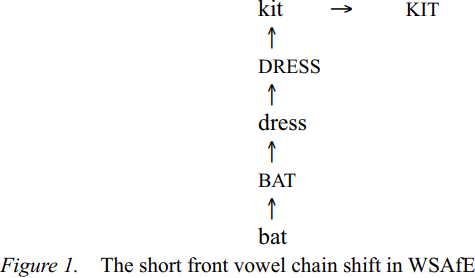

Grammar


Tenses


Present

Present Simple

Present Continuous

Present Perfect

Present Perfect Continuous


Past

Past Simple

Past Continuous

Past Perfect

Past Perfect Continuous


Future

Future Simple

Future Continuous

Future Perfect

Future Perfect Continuous


Parts Of Speech


Nouns

Countable and uncountable nouns

Verbal nouns

Singular and Plural nouns

Proper nouns

Nouns gender

Nouns definition

Concrete nouns

Abstract nouns

Common nouns

Collective nouns

Definition Of Nouns

Animate and Inanimate nouns

Nouns


Verbs

Stative and dynamic verbs

Finite and nonfinite verbs

To be verbs

Transitive and intransitive verbs

Auxiliary verbs

Modal verbs

Regular and irregular verbs

Action verbs

Verbs


Adverbs

Relative adverbs

Interrogative adverbs

Adverbs of time

Adverbs of place

Adverbs of reason

Adverbs of quantity

Adverbs of manner

Adverbs of frequency

Adverbs of affirmation

Adverbs


Adjectives

Quantitative adjective

Proper adjective

Possessive adjective

Numeral adjective

Interrogative adjective

Distributive adjective

Descriptive adjective

Demonstrative adjective


Pronouns

Subject pronoun

Relative pronoun

Reflexive pronoun

Reciprocal pronoun

Possessive pronoun

Personal pronoun

Interrogative pronoun

Indefinite pronoun

Emphatic pronoun

Distributive pronoun

Demonstrative pronoun

Pronouns


Pre Position


Preposition by function

Time preposition

Reason preposition

Possession preposition

Place preposition

Phrases preposition

Origin preposition

Measure preposition

Direction preposition

Contrast preposition

Agent preposition


Preposition by construction

Simple preposition

Phrase preposition

Double preposition

Compound preposition

prepositions


Conjunctions

Subordinating conjunction

Correlative conjunction

Coordinating conjunction

Conjunctive adverbs

conjunctions


Interjections

Express calling interjection

Phrases

Sentences


Grammar Rules

Passive and Active

Preference

Requests and offers

wishes

Be used to

Some and any

Could have done

Describing people

Giving advices

Possession

Comparative and superlative

Giving Reason

Making Suggestions

Apologizing

Forming questions

Since and for

Directions

Obligation

Adverbials

invitation

Articles

Imaginary condition

Zero conditional

First conditional

Second conditional

Third conditional

Reported speech

Demonstratives

Determiners


Linguistics

Phonetics

Phonology

Linguistics fields

Syntax

Morphology

Semantics

pragmatics

History

Writing

Grammar

Phonetics and Phonology

Semiotics


Reading Comprehension

Elementary

Intermediate

Advanced


Teaching Methods

Teaching Strategies

Assessment
White South African English: phonology Conclusion
المؤلف:
Sean Bowerman
المصدر:
A Handbook Of Varieties Of English Phonology
الجزء والصفحة:
940-53
2024-05-24
1621
White South African English: phonology Conclusion
The most salient feature of WSAfE is perhaps the behavior of KIT, DRESS, TRAP: TRAP and DRESS are raised (relative to RP and most other L1 varieties of English), and KIT is centralized. This has often been attributed to the influence of the Afrikaans vowel system. Lass and Wright proposed an alternative and more feasible alternative: that these three vowels are in fact involved in a chain shift. Raising of British/RP TRAP in (early) WSAfE encroached on DRESS, which itself raised (to keep the distinction), encroaching on KIT, which was pushed across towards [ɪ]. This can be illustrated as follows: the RP or input vowel is shown in miniscules, and the WSAfE innovation in capitals:

The diagram is taken from Lass (2002: 113); for a full elucidation of the chain shift.
This identifies WSAfE as a Southern Hemisphere English, as Australian English and New Zealand English also show raising in the high front vowels; though neither have yet achieved the push from [ɪ] to more centralized  , realizing lowered [i] instead. AusE and NZE also share /i/ in happy with WSAfE. WSAfE and NZE share /ɑ:/ in dance, glass, etc. (Trudgill and Hannah 1994:30). Some marked distinctions between WSAfE and AusE and NZE are:
, realizing lowered [i] instead. AusE and NZE also share /i/ in happy with WSAfE. WSAfE and NZE share /ɑ:/ in dance, glass, etc. (Trudgill and Hannah 1994:30). Some marked distinctions between WSAfE and AusE and NZE are:
– the behavior of FLEECE, which is diphthongal [ɪi] ~ [iɪ] in the latter varieties (Lass 2002: 116)
– the backness of BATH: fully back [ɑ:] in WSAfE, contrasting with the fully frontal [a] in AusE and NZE (Trudgill and Hannah 1994: 30).
The expansion of WSAfE to younger middle class members of other ethnic groups who have been exposed to different varieties of SAfE is a recent development, which is bound to have an impact on the variety in the future. The changes and conservations evoked by this development will be monitored with keen interest.
 الاكثر قراءة في Phonology
الاكثر قراءة في Phonology
 اخر الاخبار
اخر الاخبار
اخبار العتبة العباسية المقدسة

الآخبار الصحية















 قسم الشؤون الفكرية يصدر كتاباً يوثق تاريخ السدانة في العتبة العباسية المقدسة
قسم الشؤون الفكرية يصدر كتاباً يوثق تاريخ السدانة في العتبة العباسية المقدسة "المهمة".. إصدار قصصي يوثّق القصص الفائزة في مسابقة فتوى الدفاع المقدسة للقصة القصيرة
"المهمة".. إصدار قصصي يوثّق القصص الفائزة في مسابقة فتوى الدفاع المقدسة للقصة القصيرة (نوافذ).. إصدار أدبي يوثق القصص الفائزة في مسابقة الإمام العسكري (عليه السلام)
(نوافذ).. إصدار أدبي يوثق القصص الفائزة في مسابقة الإمام العسكري (عليه السلام)


















